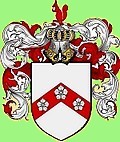 THE GILBERT FAMILY HISTORY
THE GILBERT FAMILY HISTORY
Charles Wille's Timberyard, Cliffe, Lewes
Website created by Richard Gilbert, last updated 8 February 2021.
MAIN NAVIGATION MAP
GILBERT; Waldron 1700s & earlier
|
HASSELL; Waldron --
GILBERT; Waldron 1800s --
GILBERT; to the USA
|
SODDY; Sussex & London --
GILBERT; Eastbourne 1800s --
MORRIS; Lewes & Eastbourne
|
HEWITT & HEDGEGOTT --
GILBERT; Eastbourne 1900 onwards --
CLEMENTSON; London
|
GILBERT; in the USA
CHARLES WILLE'S TIMBERYARD IN LEWES
====================================
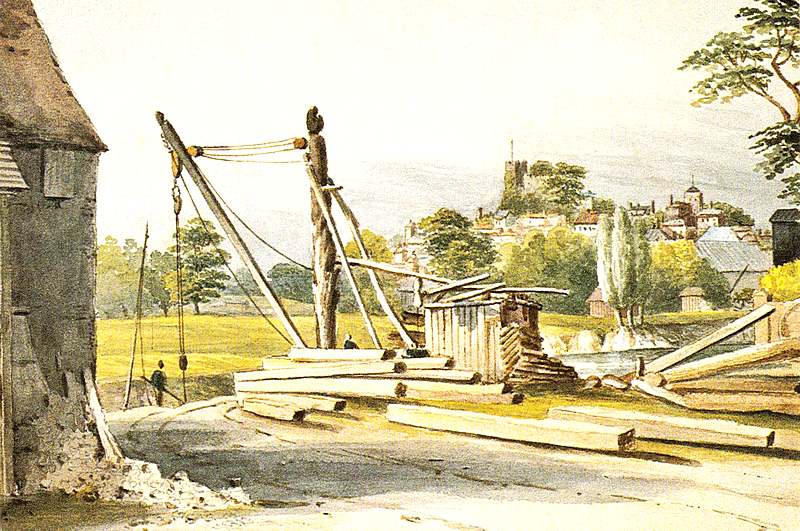
A Judges postcard "Lewes Castle from The Timberyard, Cliffe" from a watercolour of around 1834 by an unknown artist.
It shows timber being offloaded at Charles Wille's yard by a 'Scotch Derrick' from a (largely hidden) boat on the River Ouse.

George Wille (1738-1817) ran a builder's and timber merchant's yard in Lewes. The woodyard was situated along the east bank of the River Ouse in Cliffe, Lewes, in the area where Hillman Close now stands, off Timberyard Lane. Timber arrived by boat up the river, was cut and stored in the yard, and distributed throughout the area.
 More information about the Wille family.
More information about the Wille family.
George was at some time Head Borough of Lewes, and his son Charles Wille (1768-1849) inherited the business. A Trade Card dated 1830, held at the East Sussex Record Office, is inscribed Charles Wille & Sons, timber importers, South Street, Cliffe, Lewes
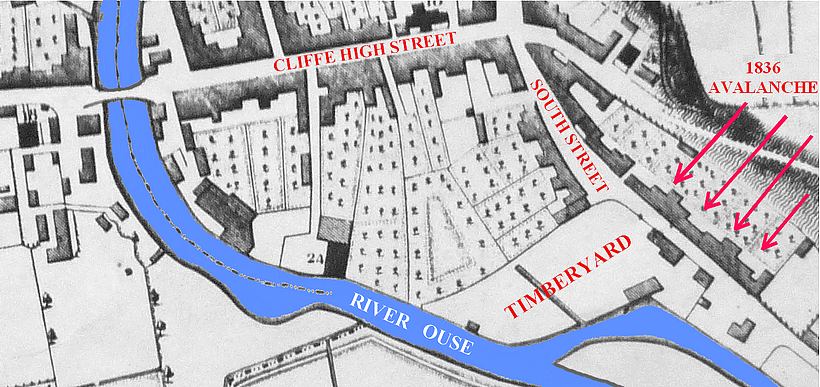
Cliffe, Lewes, from an 1824 map.
On the evening of 26 December 1836 a large snowdrift, which had built up an overhang on the top of the cliffs, fell on the timberyard demolishing several buildings including the sawmill and also driving some deal planks over 50 feet towards the river.
The following morning James Berry Morris (then 8 years old) walked round to see the damage out of curiosity. Since there remained a further danger of an avalanche, Charles Wille decided to clear the road of people (including James) and evacuate nearby cottages. Almost immediately a large volume of snow slid down the cliff, completely demolishing 7 houses. Fifteen people were buried and eight died in the incident, which remains the worst avalanche ever to occur in England, and which is commemorated in the name of the adjacent public house "The Snowdrop".
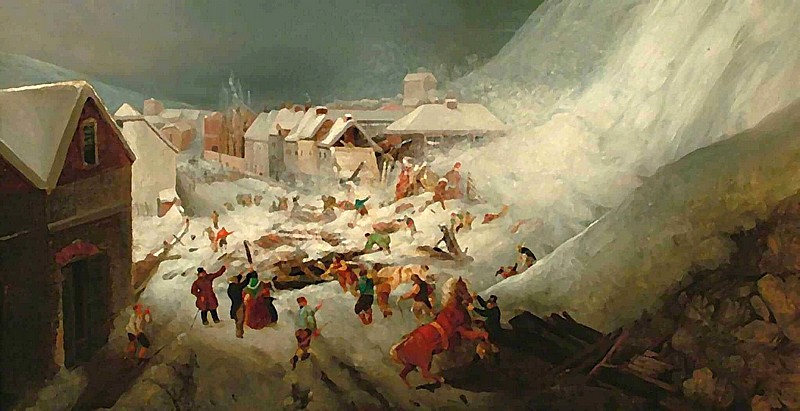
A painting of the 1836 avalanche in South Street, Lewes.
The timberyard and the River Ouse are out of view to the left of the picture.
Charles's son Charles Wille (1797-1878) inherited the business. At the 1851 census he was described as a Timber Merchant with 7 employees, living at Cliffe Cottage, South Street, Lewes, adjoining his timber yard and wharf; and also at Ryders Wells, Wellingham, Ringmer from around 1822. I don't know the exact location of Cliffe Cottage, i.e. whether it was east or west of the timberyard.
In 1853 Edward Chatfield and his partner Alfred Sampson - timber, slate and coal merchants of North Street - bought Charles Wille's South Street business and premises, which had been their main rival in the local timber trade. In his diary Charles notes; "13 August 1853, closed business." In the 1861 census Edward Chatfield was recorded as employing 35 men and 7 boys.
Charles moved to Newick on 29 September 1856, and to 'The Retreat' on 19 August 1857. He was living at 42 Stanley Street, London in 1865 (he may have been there since 1864). He then moved again to 8 Lower Belgrave Place, London, on 18 November 1865 and returned to Lewes on 31 March 1866.
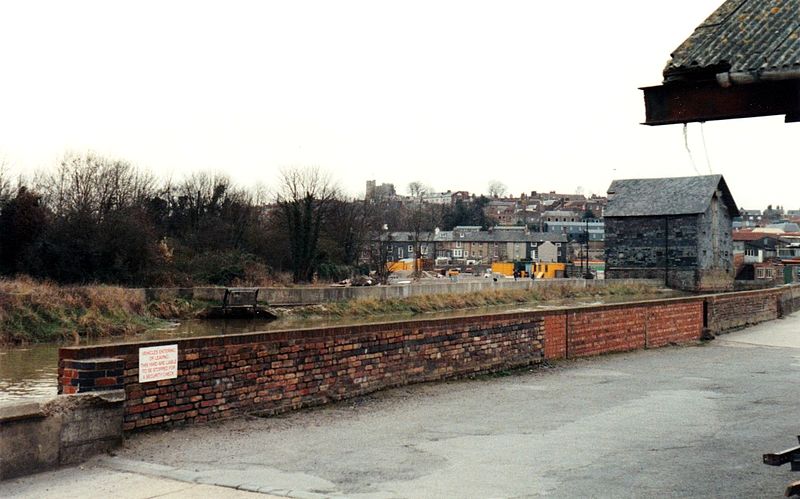
Similar view to that at the top of this page - from the site of Charles Wille's former woodyard across the River Ouse towards Lewes Castle, visible in the centre distance. Photo by H R Gilbert, March 1989.
